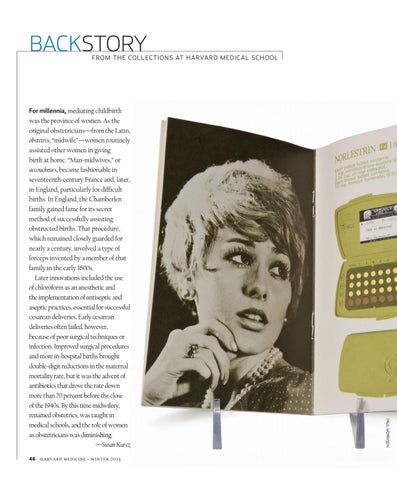backStory
from the collections at harvard medical school
46 harvard medicine ~ winter 2013
paul morrison
For millennia, mediating childbirth was the province of women. As the original obstetricians—from the Latin, obstetrix, “midwife”—women routinely assisted other women in giving birth at home. “Man-midwives,” or accoucheurs, became fashionable in seventeenth-century France and, later, in England, particularly for difficult births. In England, the Chamberlen family gained fame for its secret method of successfully assisting obstructed births. That procedure, which remained closely guarded for nearly a century, involved a type of forceps invented by a member of that family in the early 1600s. Later innovations included the use of chloroform as an anesthetic and the implementation of antiseptic and aseptic practices, essential for successful cesarean deliveries. Early cesarean deliveries often failed, however, because of poor surgical techniques or infection. Improved surgical procedures and more in-hospital births brought double-digit reductions in the maternal mortality rate, but it was the advent of antibiotics that drove the rate down more than 70 percent before the close of the 1940s. By this time midwifery, renamed obstetrics, was taught in medical schools, and the role of women as obstetricians was diminishing. —Susan Karcz














